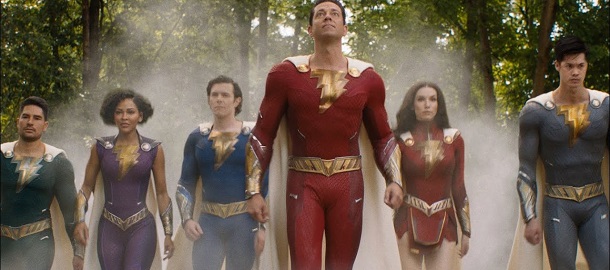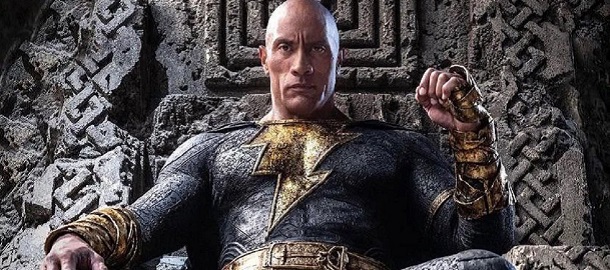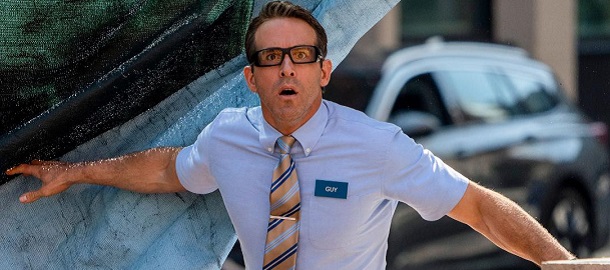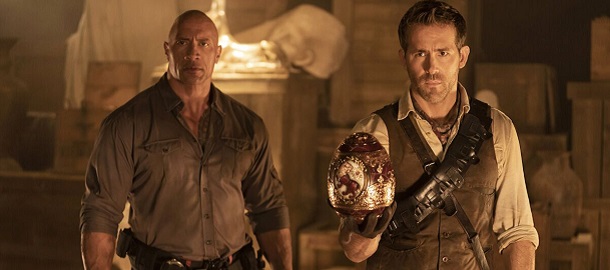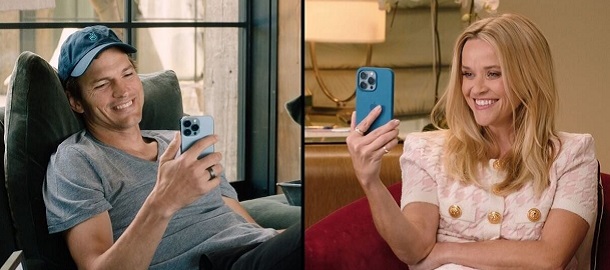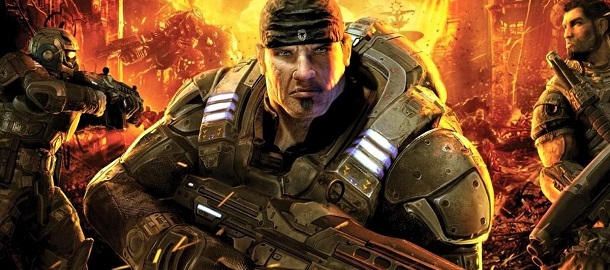Welcome to another harvest of insights from behind the showbiz curtain (for a longer version, see my newsletter hollywood101.substack.comwhich comes out every Wednesday), or what happened behind closed doors in Hollywood this past week.
Heads rolling at comic book titans
I’d hate to have a regular comics window in the newsletter, but the drama of the last twenty-four hours forces me to comment on what’s going on with both of the genre’s biggest players. We already discussed the third Ant-Man last time. And the day before last. A solid start was followed by a big drop, so much so that even Bob Iger felt that Marvel was making too many sequels and introducing few new, interesting characters. It was an inconspicuous PR box for Kevin Feige, who is gradually losing the aura of a miraculous chief producer, which he has tirelessly built for ten years straight. But in the end, someone you don’t even know is stepping down from the leadership of Marvel.
Victoria Alonso, who had a lot of functions at Marvel and was with the company since 2006, so she was behind the success of all the solo Marvel women and since Avengers (2012) she was also an executive producer, i.e. one of the most important people in the production, including responsible for post-production and visual effects finish. Recently, there was even speculation that she might replace Feige at the top job, but she’s finally leaving, being lambasted on Twitter for being part of the “problem” where Marvel was abusing its dominant position and terrorizing VFX producers with excessive demands for changes or corrections, thereby flooding the entire market, lowering standards, and kind of trampling the dreams of many young animators (I also wrote about this in one of the earlier newsletters).
However, the camp that claims that Victoria Alonso lived day and night for Marvel, working with her was always without problems and simply tried to get the best possible result. Whether her departure is an attempt by Feige to get rid of potential competition, or a necessary sacrifice for Marvel’s damaged relations with the VFX community, or indulgence for the third Ant-Man, it is further proof that there are some big changes in the Marvel kingdom.
However, it was also busy at DC, where the second Shazam! did not score well with either critics or viewers. Tracking before the premiere was 40 million, it dropped to thirty-five a week before the release, but the film finally opened at thirty, which, despite the modest budget, is a huge setback and a drop not only compared to number one, but also compared to all DCEU/DCU projects to date. It’s fascinating to see how out of control Warners is, because while in the case of Marvel’s faltering, everyone is holding the line and meekly silent, in the case of Shazam, not only the main stars Zachary Levi and Rachel Zegler, but also the director of both parts, David F .Sandberg. The latter was surprised by the harsh reviews in contrast to the satisfied audience responses on Rotten Tomatoes. But at the same time, he admits that the comic book fan community is the most toxic group of movie fans ever. He says he’s going back to horror movies and he doesn’t even want to hear about superheroes anymore.
Zachary Levi blames the fans of Zack Snyder, who they say wanted to take revenge on DC comics for not continuing their line, and simply did not come to the cinema. Poor marketing, according to the main star, also caused families with children not to come, because the film is – think – promoted as a comic film for teenagers and not as ideal family entertainment. Rachel Zegler also talks about it, who says that she had a lot of fun on the set and doesn’t understand at all the clumsy film critics who criticize the film. He proves it with several smiling photos from behind the scenes of the filming. That’s right.
The studio itself is quite clear about who is to blame. He is a person who did not appear in the film at all and by his absence sent all the plans to the hilt. Yes, you guessed right. Dwayne Johnson not only managed to sink Black Adam, in which he also stamped a cameo by Henry Cavill (perhaps at a time when Warners already knew that they did not count on him in the future), but at the same time he refused to introduce Black Adam as a villain in the second Shazam, which was supposed to precede Rock soloists. Dwayne’s ego just couldn’t take another passer position à la Fast and Furious, although it was clear that in such a lineup, the second Shazam would definitely have more commercial potential. What’s more, Johnson reportedly didn’t even want any movie tie-ins, so he even turned down a Justice Society of America (namely Hawkman) cameo in the credits scene.
At least that’s what The Wrap article says, which looks like an assassination on order. Warners has apparently slammed the door on any collaboration with Johnson. James Gunn probably won’t wake up at night because of this, for Dwayne, on the contrary, it could mean another big crack in the image of the infallible hitmaker.
Whether it’s the DC reboot or the new order at Marvel, it looks like some very interesting behind-the-scenes intrigue going forward. I promise that I will only “bother” you with them if it is an outright textbook drama like in this case. It’s still premature to talk about audience fatigue with comic book films. Neither Ant-Man nor Shazam were among the favorites of their stables, their sequels were definitely not well received by the audience, so I will evaluate only after the third Guardians of the Galaxy and the hyped Flash. It is said that Tom Cruise liked him very much. After a recommendation like that, you don’t need another review, do you?
Ryan Reynolds’ golden hands
Did you hear that Ryan Reynolds – the actor – sold a small mobile network to a large mobile network for over a billion dollars? Yes, some of the headlines last week were the art of shorthand, but the main point is that Ryan is back in the pack. Again, because in 2020 he sold his Aviation Gin, a quality men’s booze brand that he had been tirelessly building for several years, for a cool $610 million. No, that’s not a typo. The booze empire Diageo signed him up as a mascot for the next ten years, but the bottom line is that Reynolds made more from that sale than most A-list actors make in their entire careers. And two and a half years later, he sells his stake in MINT Mobile. Years ago, he invested money in the start-up of a low-cost virtual operator that used the T-Mobile network. He helped out primarily as a sponsor and famous face on the cover, but MINT grew so much that T-Mobile itself bought it for $1.35 billion. And since Reynolds owns a quarter of the entire brand, he takes home a whopping $300 million.
In addition to having his fingers in other pies through his company Maximum Effort (e.g. new collaboration with the streaming platform FUBO) and owning a football team in Wrexham, Reynolds is far from the only actor who has understood that fame does not last forever and it is necessary to rotate the period of the highest luminosity properly. Coincidentally, I am preparing a big article for Týdeník EURO on this topic, so I did a lot of research, but we don’t have to go far to recall the sale of the Casamigos tequila brand for a billion dollars (they also bought Diageo). George Clooney took a third of the money from this transaction and secured himself for life, so it’s really enough for him to shoot commercials for Nespresso and hang out on Italian promenades for fun. Even Dwayne Johnson has a back-up plan in the form of Teramana tequila, which he mercilessly promotes at all his movie premieres and heavily visited social networks. As a result, the brand is now worth nearly four billion dollars, with Dwayne owning a third of the company. If the timing is right, it will be a very nice payday.
Can we find other comparable entrepreneurs? Don’t get me wrong, opening a restaurant is one of the milestones in any actor’s career. A lot of them started out delivering drinks while waiting for auditions, so by opening their own business, they come full circle, even if it ends up costing them millions of dollars. In the same way, I don’t count the various fashion brands for actresses, which they then sell at a great profit (Fabletics and Kate Hudson), although one has to pay homage to Mary-Kate and Ashley Olsen here. The famous twins from children’s movies have used their status as fashion icons to launch a fashion empire that has made them billionaires.
That Reese Witherspoon, that’s another league. She used the income from the romantic comedies to launch her own production label Hello Sunshine, in which she searched for quality book templates in order to provide herself and other actresses with quality scripts in which they would not have to fight with traditional boxes. And the world was amazed, it was a thunderous success. Last year, Reese sold her company for $900 million, but she continues to hold an important position in the company. However, unlike other faded stars of romantic comedies, she certainly does not have to worry about financial independence. Brad Pitt was similarly clever at one time when he wrote the idea of a backup plan into the name of his label. He co-founded Plan B with multiple people, including his then-wife Jennifer Aniston, but ultimately the company stayed with him, producing a string of award-winning films across the genre spectrum.
Last year, Pitt sold 60% of the company to the French conglomerate Mediawan for about $270 million. Why? Because, he said, he no longer wanted to worry about existence. As with other sales, Pitt remains the face of the label and retains the remaining 40% stake. So that he can knock off a project for himself when he wants to step in front of the camera.
And then we have Ashton Kutcher, which is a case in itself. On the silver screen, he looks like he can’t count to five, even when he’s playing Steve Jobs, but in private he used the peak of his career to pour money into projects with weird names like Uber, Skype, AirBnB, or Spotify as an angel investor. Everyone would probably like to have his crystal ball or time machine. As a result, Kutcher became very quickly a very rich person who does not have to play for anything and in anything for the rest of his life.
Video game revolution to continue?
And a small canapé at the end, which is more of a promise of things to come. The Last of Us is finally upon us, lifted to the skies by reviews and ratings. Everyone is now hoping that video game adaptations have broken through some kind of invisible ceiling and will embark on the mainstream path to success that comic book movies did twenty years ago. Maybe… maybe it really will happen, because Netflix is preparing a very expensive adaptation of Gears of War, Amazon has a new Tomb Raider up its sleeve, but also adaptations of Fallout, Mass Effect, or God of War.
It’s all going to be big-budget stuff, so it’s a now-or-never attack on the audience. So at least Amazon is a little ahead of itself, but if we add Sony’s activities (including, in addition to the aforementioned The Last of Us, for example, the feature-length Uncharted and the upcoming Gran Turismo), or Super Maria, which is about to hit the cinemas in a few weeks, it is quite certain that video games finally got their chance. It is difficult to estimate whether they will be able to use it as effectively as comics. Even with those, until the overwhelming onset of the MCU, it was true that there were two or three misses for one hit. Even with a similar ratio, however, we can obviously look forward to a few very interesting projects in film and especially series form.
